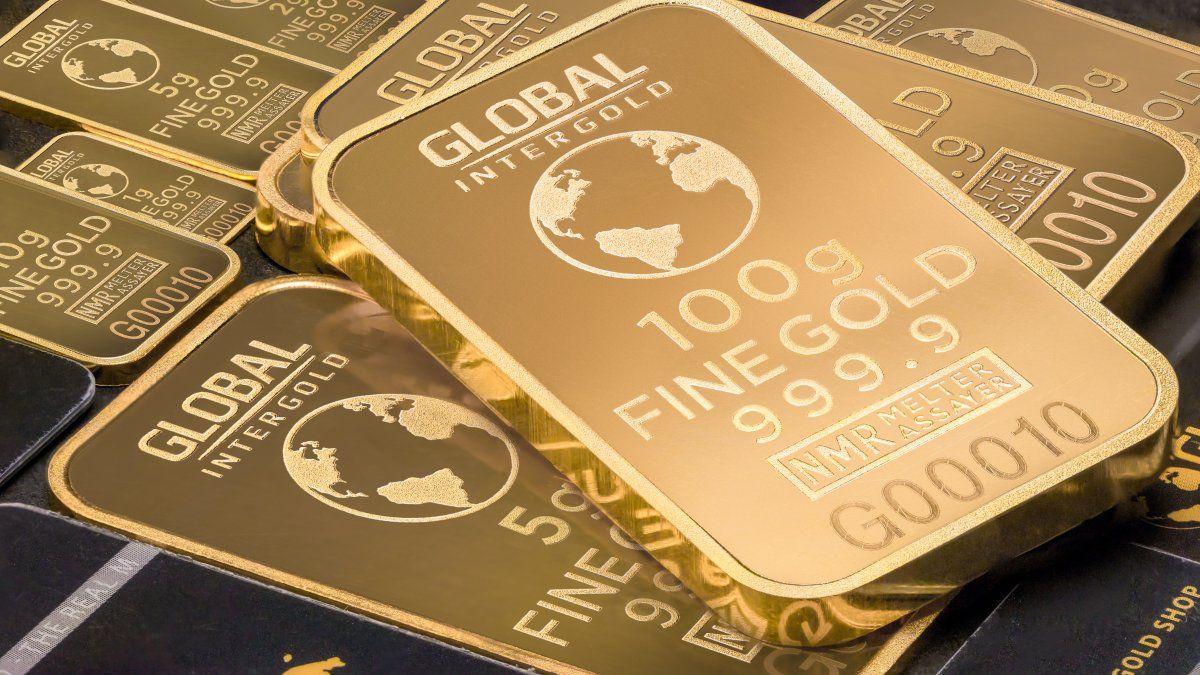Having reached historically high prices, the gold raised some doubts among investors. However, Some, apart from central banks, continued to bet on the precious metal. They were the funds Gold ETF Physically backed securities worldwide recorded capital inflows for the third consecutive month, totaling $3.7 billion in July, according to data from the London Metals Market.
While all regions reported positive flows last month, The most notable performers were Western gold ETFs. All this gave leading to a 6% increase in total assets under management of global ETFs to levels of almost $250 billion, which is explained by the combination of the capital inflow in July and an increase in 4% in the price of gold, setting a new record. As for collective holdings, WGC data show that they closed July with an increase of 48 tonnes, reaching 3,154 tonnes.
In this way, the balance of what has gone by this year shows that the successive capital inflows in the last few months have reduced the Global gold ETFs lose $3 billion. It is worth noting that although collective holdings have fallen by 72 tonnes (-2%) so far in 2024, total assets under management increased by 15%, supported by a 17% increase in the gold price.
Regional overview
American funds recorded inflows of 2 billion dollars, which more than reversed the minor departures of May and June. It is worth remembering that July was an unprecedented month on the political front, with the attempted assassination of Donald Trump followed by Joe Biden’s withdrawal from the presidential race.
Gold ETFs saw inflows on both dates, pointing to increased safe-haven demand. Meanwhile, falling inflation, a cooling labor market and the note from the Federal Reserve (Fed) chairman, Jerome Powellthat a cut in September is “on the table” During the recent meeting, investors’ expectations of an early easing of interest rates increased.
In turn, the U.S. Treasury yields fell and the dollar weakened, which pushed the price of gold to an all-time high during the month and spurred investor interest in gold ETFs. Moreover, experts believe that the volatilities in the stock market, especially during the second half of July, also supported demand for gold ETFs.
So far in 2024, American fund outflows have amounted to $2.9 billion and collective holdings have fallen by 52 tonnessecond only to European losses. However, boosted by recent inflows and the notable strength of the gold price, total assets under management of North American funds are up 14% so far.
European market
Europe, meanwhile, has seen capital inflows for three consecutive months, attracting $1.2 billion in July, the highest figure since March 2022. The UK and Switzerland led the way in capital inflows. A common backdrop across the region in July has been falling sovereign bond yields.
Although the European Central Bank (ECB) left rates unchanged at its July meetingthe comment of its head, Christine Lagarde, that the September decision is “very open” intensified investors’ expectations of another cut in the near future.
Meanwhile, investors were expecting that The Bank of England (BoE) will begin its easing cycle on August 1, and complied with the market consensus, cutting 25 basis pointsthe first time in four years. In addition, the commitment to address fiscal challenges by the new UK Chancellor of the Exchequer, Rachel Reeves, helped restore some confidence in public finances and contributed to a reduction in UK Treasury bond yields.
Notably, as the opportunity cost of holding gold fell, investor interest in gold ETFs increased in the region, further boosted by a record gold price. London market data shows that recent capital inflows have reduced European losses to date to $3.7 billion and reduced the fall in holdings to 1,319 tonnes. As in North America, a higher gold price coupled with recent positive demand pushed total assets under management of funds in the region to $103 billion, up 12%.
Asia demands
While Asia extended its streak of inflows to 17 months, attracting $438 million in July, with India leading the inflows. Strong Indian demand was helped primarily by changes announced in the recent budget that effectively shorten the long-term investment qualification period and lowered the associated tax rate, making the investment landscape for gold ETFs more equitable and attractive.
A strong gold price in local currency also helped. In addition, net inflows were seen in China and Japan, likely driven by similar factors such as weak stock markets and strong local gold price performances in the month.
Despite the slowdown in July, Asia has recorded inflows of $3.6 billion so far this year, significantly outperforming all other markets, driven primarily by China and Japan. Supported by record inflows and a higher gold price, total assets under management of Asian funds reached $15 billion, the highest level in history, while collective holdings increased by 47 tonnes.
In other regions, July marks the second consecutive month of moderate inflows, mainly from South Africawhere post-election political uncertainties may have helped. While Australia also experienced positive flows, likely driven by a strong gold price performance on the depreciation of the local currency. So far in 2024, funds listed in other regions saw inflows of $40 million, mainly due to South Africa.
Positive signal
Another fact Encouraging news from July is the recovery of gold trading volumes in all markets, with a average of $250 billion per day, up 27% month-on-month and firmly above the 2023 average of $163 billion per day.
Similar to June, stronger LBMA volumes boosted global over-the-counter (OTC) trading activities by 16% higher at $150 billion per day, representing a 13% month-on-month increase in tonnage terms. Trading volumes on all major exchanges increased in July, up 51% month-on-month, with COMEX leading the increase. Trading activities of the Comex ETFs Global gold prices also rose, increasing 9.3% month-on-month, driven mainly by North American funds.
While total net long positions on COMEX saw a notable increase and closed July at 783 tonnes, up 2% from previous months. London market experts point out that continued strength in gold and falling yields amid intensifying expectations of lower interest rates ahead pushed money managers’ net long positions (the main component of net long gold positions on COMEX) to 588 tonnes at the end of July, an increase of 2% and the highest month-end level since February 2020.
Source: Ambito
I am a 24-year-old writer and journalist who has been working in the news industry for the past two years. I write primarily about market news, so if you’re looking for insights into what’s going on in the stock market or economic indicators, you’ve come to the right place. I also dabble in writing articles on lifestyle trends and pop culture news.




